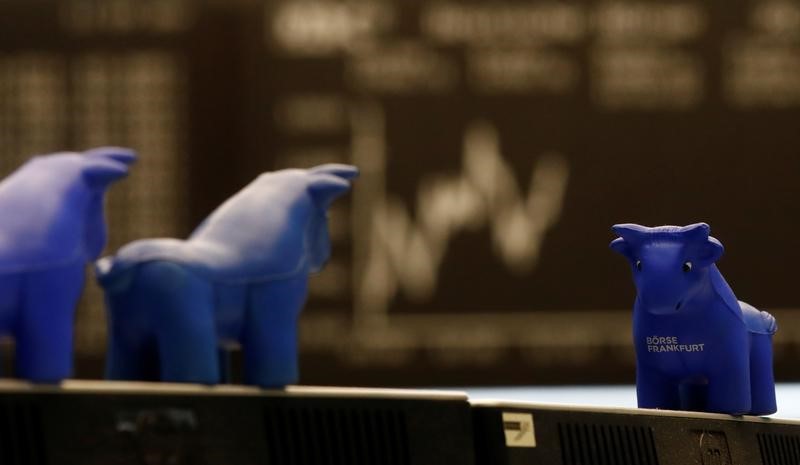This post was originally published on this site
https://i-invdn-com.investing.com/news/LYNXMPEE0E0CM_M.jpg
Investing.com – European stock markets edged higher Thursday after Fed Chair Jerome Powell signaled a smaller interest rate increase later this month, but weak German retail sales tempered gains.
At 04:00 ET (09:00 GMT), the DAX index in Germany traded 0.6% higher, CAC 40 in France traded up 0.2% and the FTSE 100 in the U.K. gained 0.2%.
Global economic activity has been battered for months by sharp interest rate increases from a number of senior central banks, and the U.S. Federal Reserve in particular, as they attempted to rein in inflation at record levels.
However, the latest inflation data suggested that price rises may have peaked, giving the Fed room to rein in its monetary tightening.
Wednesday’s November CPI release also showed a bigger than expected fall in the Eurozone, bolstering the case for a slowdown in European Central Bank rate hikes later this month, but an annual figure of 10% is still five times higher than the central bank’s target.
That said, the extent of the economic difficulties facing the Eurozone was laid bare earlier Thursday after data showed that German retail sales slumped 2.8% in October, an annual drop of 5%, setting an ominous tone for a fourth quarter in which Europe’s largest economy is widely expected to shrink.
Manufacturing PMI data for the Eurozone as a whole also showed this important sector continued to contract in November.
Also helping sentiment was growing optimism that China was softening its stance on COVID-19 restrictions as several cities in the world’s second-largest economy lifted regional lockdowns even with infections remaining at high levels.
Crude oil prices edged higher Thursday with the focus on the weekend’s OPEC+ meeting in terms of future global crude supply.
The Organization of the Petroleum Exporting Countries and allies meet virtually on Sunday, and the fact the delegates are not meeting in person is seen as indicating that future production levels will remain unchanged.
However, crude prices have fallen close to their lowest levels this year, and are below the levels which prompted the group to slash output by 2 million barrels a day last month.
Crude prices had rallied sharply this week after data showed U.S. inventories shrank substantially more than expected in the prior week, with data from the Energy Information Administration pointing to a drop of over 12 million barrels.
By 04:00 ET, U.S. crude futures traded 0.6% higher at $81.00 a barrel, while the Brent contract rose 0.5% to $87.44.
Additionally, gold futures rose 1.8% to $1,791.05/oz, while EUR/USD traded 0.3% higher at 1.0438.

